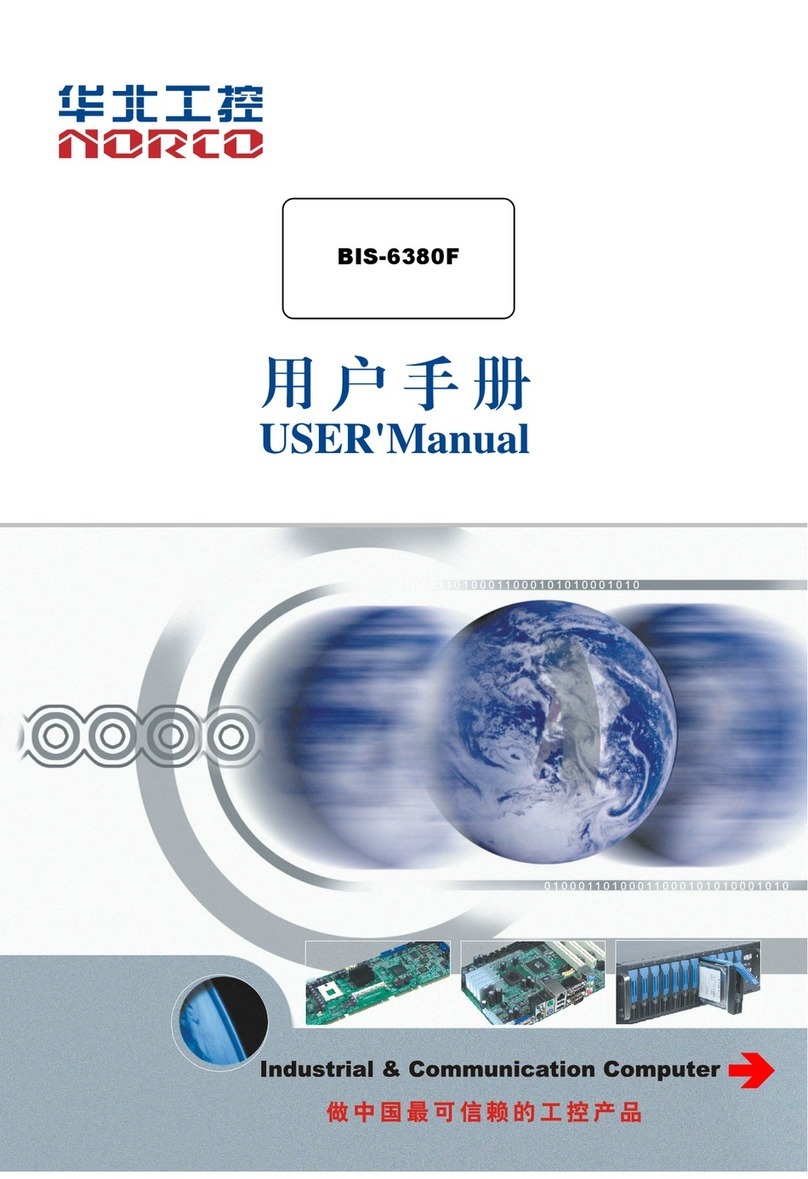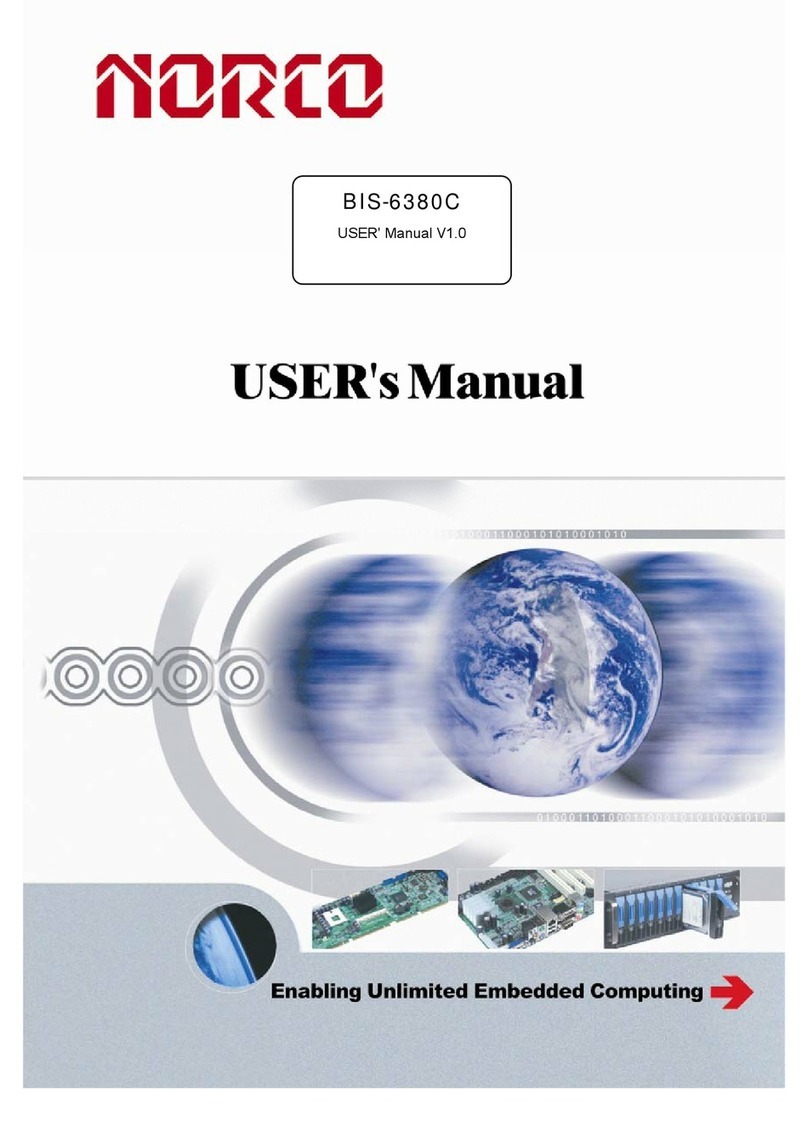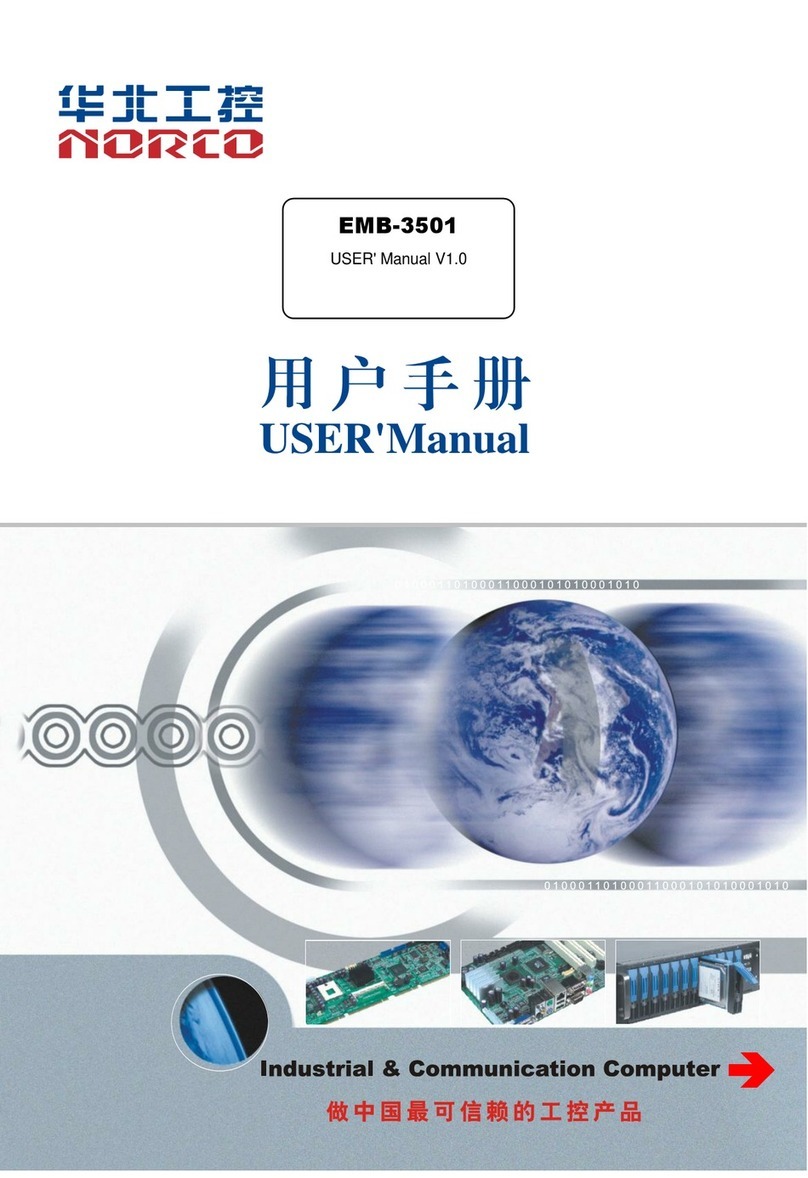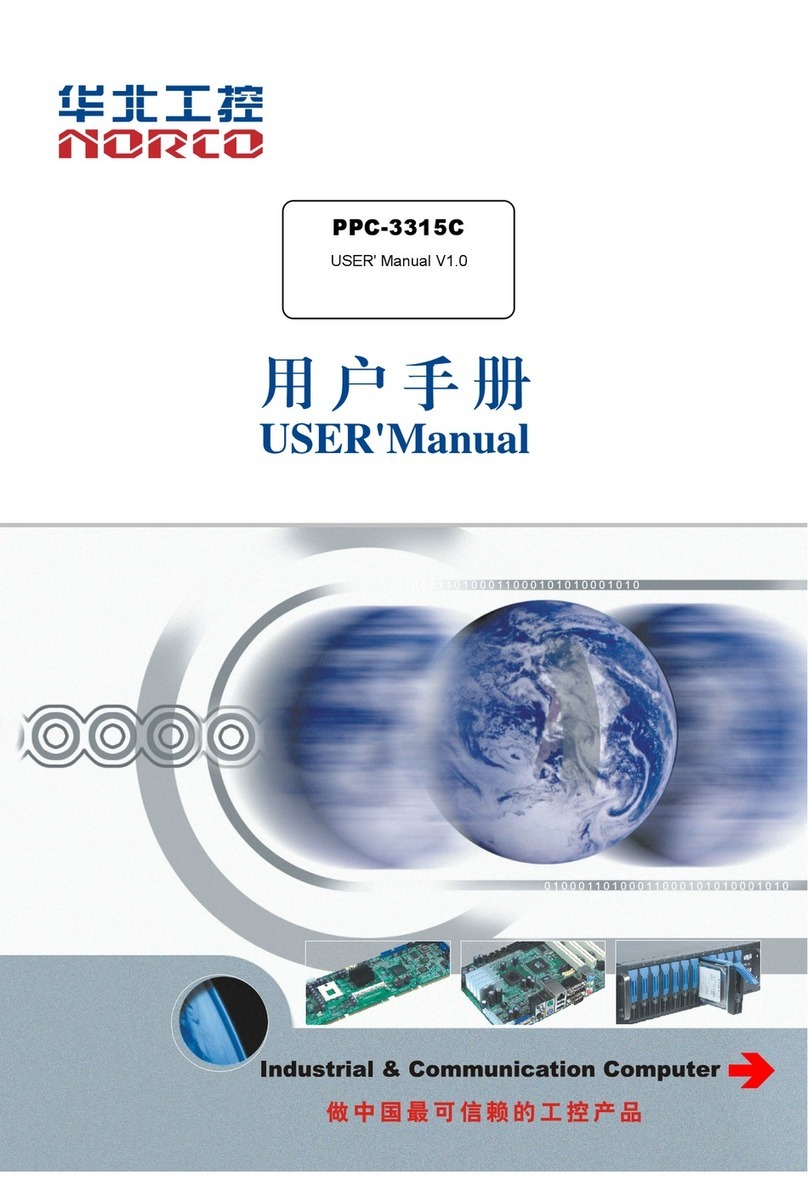
TableofContents
Chapter 1 Product Introduction .................................................................................................. 1
1.1 Overview ....................................................................................................................... 1
1.2 Specifications ................................................................................................................ 1
Chapter 2 Hardware Introduction ............................................................................................... 4
2.1 External Interfaces Location ......................................................................................... 4
2.2 Front Panel I/O Connectors .......................................................................................... 4
2.2.1 Audio(Speak-out, Mic-in)................................................................................ 4
2.2.2 LED..................................................................................................................... 4
2.2.3 USB(USB1/2)................................................................................................. 5
2.2.4 Ethernet(LAN)................................................................................................ 5
2.2.5 HDMI(HDMI1/HDMI2).................................................................................... 5
2.3 Inner Interfaces ............................................................................................................. 6
2.3.1 COM Ports(COM1_COM5)............................................................................ 6
2.3.2 SATA Port(SATA)............................................................................................ 7
2.3.3 USB (USB34、USB56)................................................................................. 8
2.3.4 KEY(3x3)........................................................................................................ 9
2.3.5 Audio(AUDIO)................................................................................................ 9
2.3.6 Display(LVDS).............................................................................................. 10
2.3.7 JTCH, JLVDS.................................................................................................... 12
2.3.8 J8, J14, J15, J16............................................................................................... 13
2.3.9 MINI PCIe ......................................................................................................... 14
2.3.10 CAN BUS(J5)............................................................................................. 14
2.3.11 Four-wire Resistive Touch(J4).................................................................... 15
Chapter 3 Installation Instructions............................................................................................ 17
3.1 Jumper Setting............................................................................................................ 17
3.1.1 COM2 Jumper Setting(J1, J2, J3)................................................................ 17
3.2 Hard Disk Installation .................................................................................................. 18
3.3 Structure Diagram (Dimension)................................................................................... 19
Chapter 4 Software Functions.................................................................................................. 19
4.1 Android........................................................................................................................ 19
4.1.1 VGA ................................................................................................................. 19

































